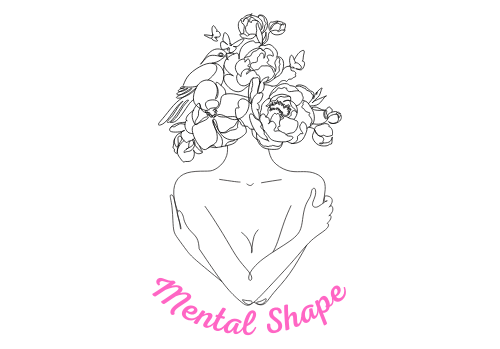Are you or someone you know struggling with trauma or PTSD? In this article, we will explore effective strategies and techniques that can help individuals overcome these debilitating conditions. Through understanding the nature of trauma and PTSD, and implementing self-care practices, therapy, and support systems, it is possible to reclaim a sense of control and build resilience in the face of adversity. Let’s embark on this journey towards healing together.
Understanding Trauma and PTSD
Definition of Trauma
Trauma is a deeply distressing and overwhelming experience that often overwhelms a person’s ability to cope. It can result from a single event, such as a car accident or natural disaster, or from ongoing exposure to stressful situations, such as abuse or combat. Trauma can have a profound impact on a person’s emotional and psychological well-being, leading to a wide range of symptoms and difficulties in daily life.
Definition of PTSD
Post-Traumatic Stress Disorder (PTSD) is a specific type of trauma-related mental health condition that can develop in individuals who have experienced or witnessed a traumatic event. PTSD is characterized by a range of symptoms that persist beyond the initial trauma, including intrusive memories, nightmares, flashbacks, and intense emotional and physical reactions. These symptoms often interfere with a person’s ability to function effectively in various aspects of their life.
Causes of Trauma and PTSD
Trauma can occur in various forms and can affect anyone, regardless of age, gender, or background. Common causes of trauma include physical or sexual assault, natural disasters, car accidents, combat exposure, childhood abuse, or the sudden loss of a loved one. However, it’s important to remember that everyone’s response to trauma is unique, and not all individuals who experience a traumatic event will develop PTSD. Factors such as pre-existing mental health conditions, personal resilience, and available support systems can influence the likelihood of developing PTSD.
Recognizing the Signs and Symptoms
Physical Symptoms
Trauma and PTSD can manifest in a variety of physical symptoms. These may include sleep disturbances, such as insomnia or nightmares, chronic pain, headaches, gastrointestinal issues, increased heart rate, and difficulty breathing. It is crucial to pay attention to these physical symptoms as they can provide important clues regarding the presence of underlying trauma-related issues.
Emotional and Cognitive Symptoms
Emotional and cognitive symptoms of trauma and PTSD can significantly impact a person’s day-to-day life. Common emotional symptoms include intense fear, anxiety, anger, guilt, shame, sadness, and feelings of detachment or numbness. Cognitive symptoms can manifest as difficulties with concentration, memory problems, intrusive thoughts, and a negative outlook on oneself or the world. Recognizing and acknowledging these symptoms is an important step towards seeking help and support.
Behavioral Symptoms
Behavioral symptoms of trauma and PTSD can vary widely depending on the individual. Avoidance behaviors, such as avoiding places, people, or activities that remind them of the trauma, are common. Individuals might also experience changes in their sleep and eating patterns, as well as increased irritability, aggression, or impulsivity. Substance abuse, self-harm, and social isolation are also common behavioral manifestations of trauma and PTSD. If you or someone you know is exhibiting these behaviors, it may be indicative of underlying trauma-related issues.

Seeking Professional Help
Therapy and Counseling
Therapy and counseling services are essential in the treatment of trauma and PTSD. Mental health professionals, such as psychologists, psychiatrists, or licensed therapists, can provide a safe and supportive environment where individuals can explore and process their traumatic experiences. Various therapeutic approaches may be employed, including cognitive-behavioral therapy (CBT), eye movement desensitization and reprocessing (EMDR), and psychodynamic therapy. These evidence-based therapies can help individuals understand and address the root causes of their trauma-related symptoms and develop effective coping strategies.
Medication Options
In some cases, medication may be prescribed to manage the symptoms of trauma and PTSD. Antidepressant or anti-anxiety medications can help alleviate symptoms such as depression, anxiety, and intrusive thoughts. Medication should be prescribed and monitored by a qualified healthcare professional, as it is often most effective when used in conjunction with therapy.
Support Groups
Support groups can be a valuable source of emotional support and validation for individuals with trauma and PTSD. Connecting with others who have had similar experiences can help reduce feelings of isolation and provide a sense of belonging. Support groups can be found in local communities, online platforms, or through mental health organizations. Sharing experiences, insights, and coping strategies within a supportive group setting can be a powerful tool in the recovery process.
Developing Coping Strategies
Self-Care Practices
Engaging in self-care practices can significantly contribute to healing after trauma. This can include activities such as getting enough rest, maintaining a balanced diet, engaging in hobbies, and spending time in nature. Engaging in self-care activities promotes a sense of self-worth, self-love, and nurtures a positive mindset.
Mindfulness and Meditation
Practicing mindfulness and meditation can help individuals develop awareness of their thoughts and emotions without judgment. These practices can be instrumental in managing stress, anxiety, and intrusive thoughts associated with trauma and PTSD. They provide a space for individuals to ground themselves in the present moment and cultivate a sense of calm and inner peace.
Exercise and Physical Activity
Engaging in regular exercise and physical activity can play a significant role in trauma recovery. Physical movement releases endorphins, which are natural mood enhancers. Whether it’s a brisk walk, yoga, dancing, or any form of exercise that brings joy, physical activity can help reduce symptoms of trauma and PTSD, increase feelings of well-being, and improve overall mental health.

Building a Support Network
Family and Friends
Family and friends can offer invaluable support during the recovery process. Sharing your experiences with loved ones can help foster understanding, empathy, and connection. Building a network of trusted individuals who can provide emotional support, lend an ear, or assist with practical matters can be instrumental in navigating the challenges of trauma and PTSD.
Supportive Relationships
Aside from family and friends, establishing supportive relationships with individuals who understand trauma and its effects can be immensely beneficial. This may include connecting with others who have had similar experiences, either through support groups or online communities. Sharing stories and insights with individuals who have walked a similar path can create a sense of solidarity, validation, and mutual support.
Online Forums and Communities
There are numerous online forums and communities dedicated to trauma recovery and support. These platforms provide a space for individuals to anonymously share their experiences, ask questions, and receive support from others who have experienced trauma or PTSD. Participating in these communities can help individuals feel less alone and provide access to a wealth of resources, coping strategies, and personal anecdotes.
Embracing Positive Lifestyle Changes
Healthy Diet and Nutrition
Maintaining a healthy and balanced diet can support overall well-being and aid in the recovery process. Consuming nutrient-rich foods, such as fruits, vegetables, whole grains, and lean proteins, can help regulate mood and energy levels. Limiting the intake of processed foods, caffeine, and alcohol can also contribute to a stable emotional state and improve overall physical health.
Quality Sleep Hygiene
Establishing healthy sleep habits is crucial for individuals with trauma and PTSD. Practicing good sleep hygiene involves creating a comfortable sleep environment, avoiding screens before bedtime, maintaining a consistent sleep schedule, and engaging in relaxation techniques before sleep. Quality sleep can enhance emotional regulation, cognitive function, and overall mental well-being.
Avoiding Substance Abuse
Individuals who have experienced trauma may be at an increased risk of developing substance abuse issues. Substance abuse can be used as a coping mechanism to numb emotional pain or escape intrusive thoughts associated with trauma. It is important to seek healthier coping strategies and avoid turning to substances as a way to manage trauma-related symptoms. If you or someone you know is struggling with substance abuse, seeking professional help is crucial.
Processing Trauma Through Self-Reflection
Journaling and Writing
Writing can be a powerful tool for processing and healing trauma. Journaling allows individuals to express their thoughts, feelings, and experiences in a safe and private space. Reflecting on past traumas, documenting progress, and exploring emotions through writing can help individuals gain insight, find patterns, and promote self-understanding.
Art Therapy
Art therapy uses creative outlets, such as drawing, painting, and sculpting, to help individuals express and process their emotions related to trauma. Engaging in artistic activities can provide a non-verbal means of communication and can tap into the subconscious, allowing individuals to explore and release deeply rooted emotions in a safe and supportive environment.
Body-Based Therapies
Body-based therapies, such as somatic experiencing and yoga therapy, focus on the connection between the mind and body in trauma recovery. These approaches utilize gentle movement, breathwork, and mindfulness to release trauma stored in the body and cultivate a sense of safety and grounding. By addressing the physical manifestations of trauma, individuals can experience a greater sense of wholeness and well-being.
Facing Traumatic Memories Gradually
Exposure Therapy
Exposure therapy is a technique commonly used in the treatment of trauma and PTSD. This approach involves gradually and safely exposing individuals to the thoughts, memories, and situations that trigger their trauma-related symptoms. By facing these memories in a controlled and supportive environment, individuals can learn to retrain their brains to respond differently to trauma triggers, reducing the intensity of their symptoms.
Eye Movement Desensitization and Reprocessing (EMDR)
EMDR is a specialized therapeutic technique that utilizes bilateral stimulation, such as eye movements, to help individuals process traumatic memories and reframe their associated beliefs. By engaging both the left and right sides of the brain, EMDR can foster adaptive processing and alleviate the distressing symptoms associated with trauma. EMDR is typically administered by a trained therapist and has proven to be highly effective for many individuals with trauma and PTSD.
Virtual Reality Therapy
Virtual reality therapy is an innovative approach to trauma treatment that uses computer-generated environments to simulate traumatic situations in a controlled setting. This allows individuals to revisit and process their traumatic memories in a safe and supportive environment. Virtual reality therapy has shown promising results in reducing trauma-related symptoms and increasing resilience.
Exploring Alternative Healing Methods
Acupuncture
Acupuncture, a traditional Chinese medicine practice, involves the insertion of thin needles into specific points on the body. It is believed to rebalance the flow of energy, called qi, through the body. Acupuncture has been found to have a calming effect, reducing anxiety and stress associated with trauma. It can also help alleviate physical symptoms such as chronic pain and sleep disturbances.
Yoga and Tai Chi
Yoga and Tai Chi are mind-body practices that combine physical postures, breathwork, and meditation. These practices promote relaxation, reduce stress, improve flexibility, and cultivate mindfulness. Engaging in regular yoga or Tai Chi sessions can help individuals reconnect with their bodies, reduce trauma-related symptoms, and promote overall well-being.
Animal-Assisted Therapy
Animal-assisted therapy involves interactions with trained therapy animals to provide emotional support and relieve stress. The presence of animals can create a calming and soothing environment, allowing individuals to experience increased relaxation and a sense of connection. Animal-assisted therapy has been found to reduce symptoms of trauma and PTSD, improve mood, and enhance overall quality of life.
Maintaining Long-Term Recovery
Continuing Treatment and Follow-Up
Trauma and PTSD recovery is an ongoing process that requires consistent effort and dedication. Continuing treatment, such as therapy or medication, and attending regular follow-up appointments with healthcare professionals is essential. These check-ins allow for ongoing assessment, adjustments to treatment plans if necessary, and provide a safe space to discuss any emerging challenges or concerns.
Stress Management Techniques
Learning and implementing stress management techniques can be valuable in maintaining long-term recovery. These techniques may include deep breathing exercises, mindfulness practices, progressive muscle relaxation, or engaging in hobbies and activities that promote relaxation and joy. By effectively managing stress, individuals can reduce the likelihood of triggers and prevent the onset of trauma-related symptoms.
Building Resilience
Building resilience is a key aspect of long-term recovery. Resilience is the ability to bounce back from adversity and adapt to challenging circumstances. Cultivating resilience involves cultivating self-care practices, fostering healthy relationships, setting realistic goals, practicing gratitude, and developing problem-solving skills. By enhancing resilience, individuals can better navigate the ups and downs of life and minimize the impact of future traumas.
In conclusion, overcoming trauma and PTSD is a complex and deeply personal journey. It requires a combination of professional help, self-care practices, and support from loved ones. By understanding the definitions of trauma and PTSD, recognizing the signs and symptoms, seeking professional help, developing coping strategies, building a support network, embracing positive lifestyle changes, processing trauma through self-reflection, facing traumatic memories gradually, exploring alternative healing methods, and maintaining long-term recovery, individuals can embark on a path towards healing, growth, and resilience. Remember, you are not alone, and there is hope for a brighter future.
